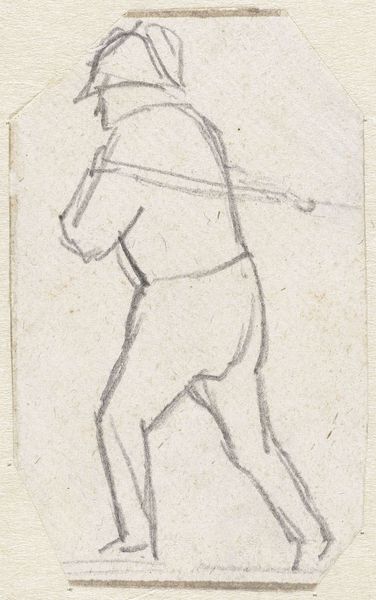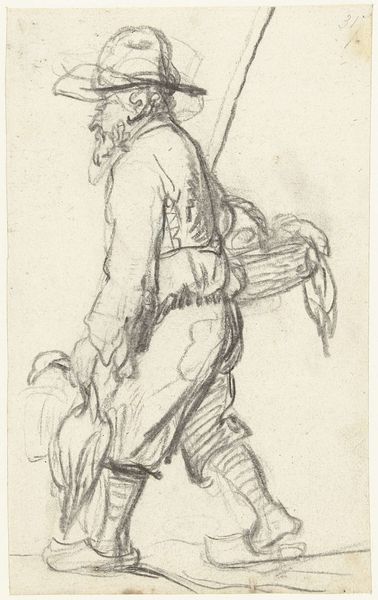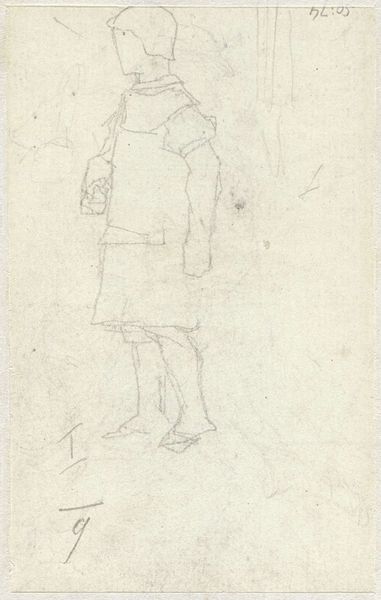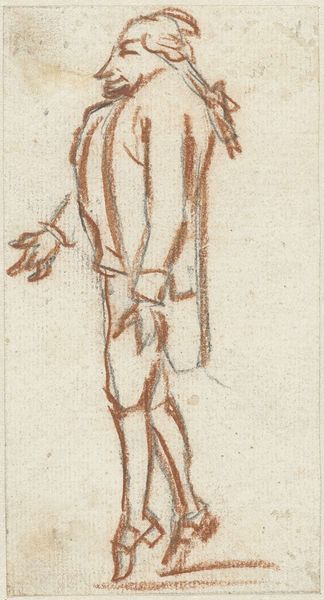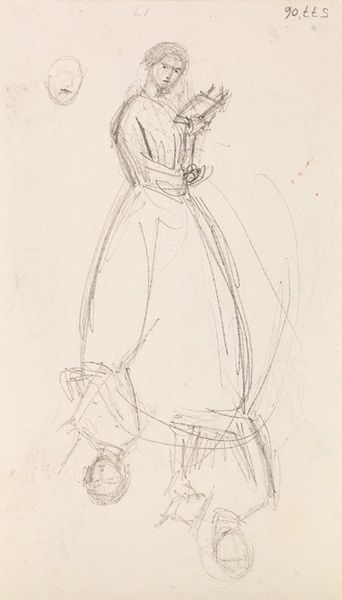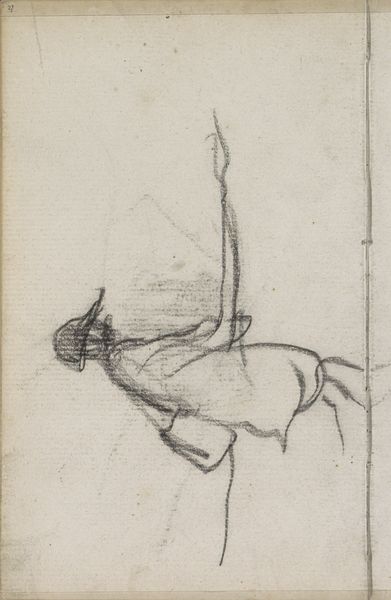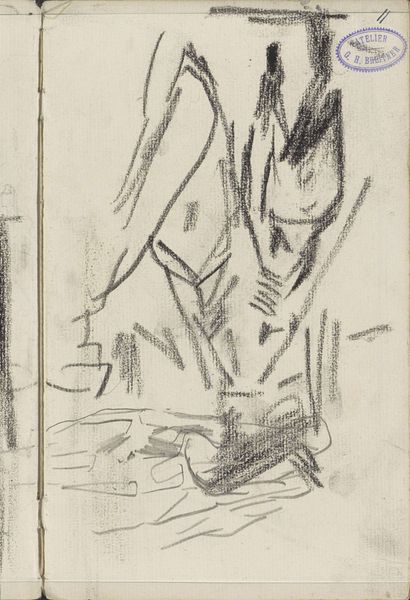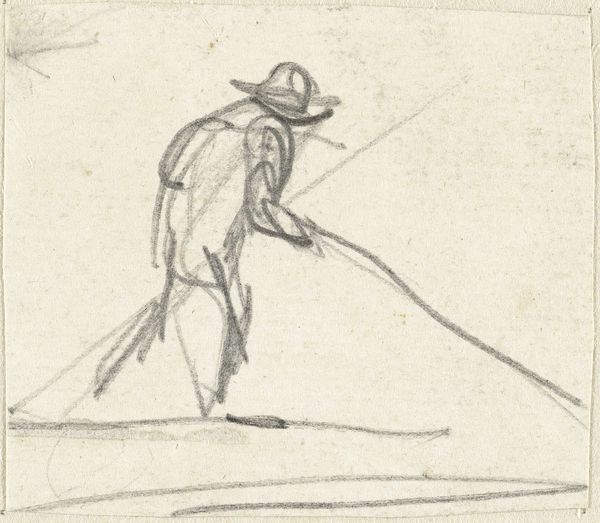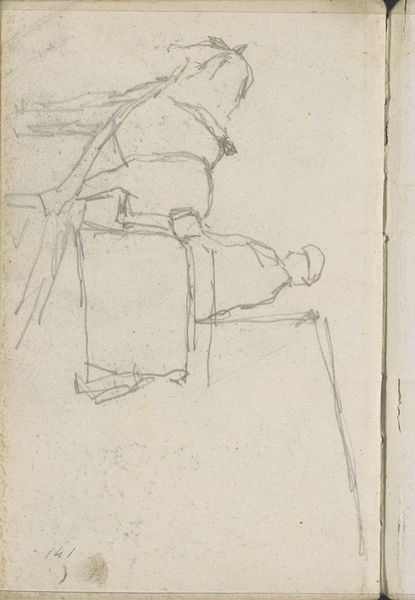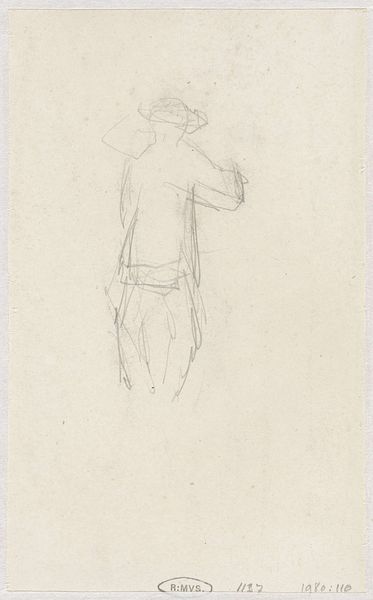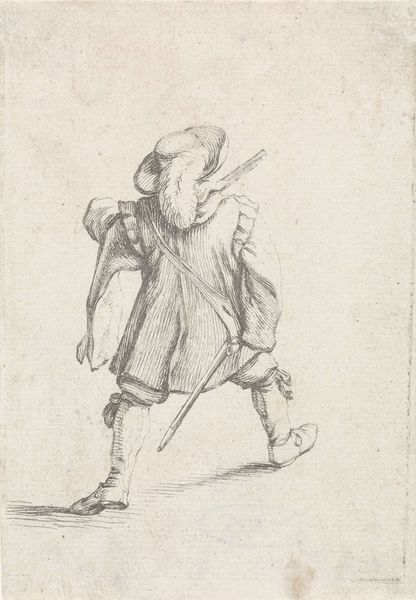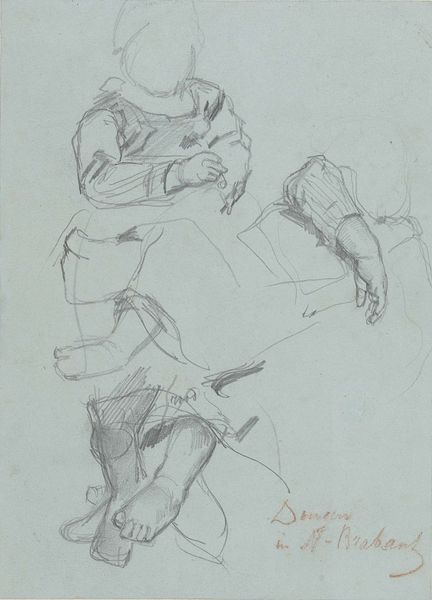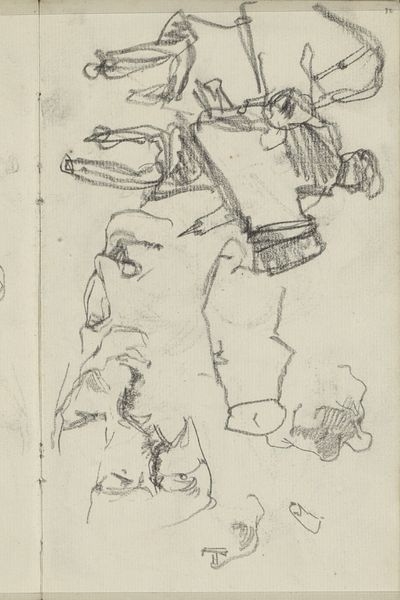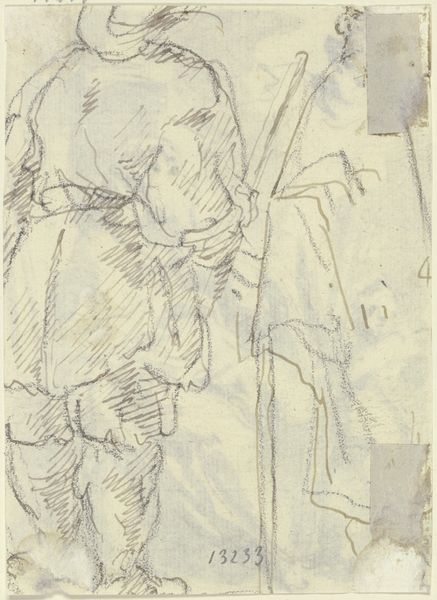
drawing, pencil
#
portrait
#
drawing
#
quirky sketch
#
figuration
#
personal sketchbook
#
idea generation sketch
#
sketchwork
#
ink drawing experimentation
#
romanticism
#
pen-ink sketch
#
pencil
#
sketchbook drawing
#
storyboard and sketchbook work
#
sketchbook art
#
initial sketch
Dimensions: height 73 mm, width 57 mm
Copyright: Rijks Museum: Open Domain
Curator: Here we have "Sketch of a Bomende Man," a drawing attributed to Simon Andreas Krausz, likely created sometime between 1770 and 1825. It appears to be pencil on paper. Editor: It’s strikingly immediate, isn't it? So sparse, almost fragile, capturing a figure in motion with minimal lines. There is a definite melancholy to this quickly rendered figure. Curator: Sketches such as this give insight into the development of imagery within Krausz’s larger body of work. We must consider the art world during this time. Think of the shifts occurring, moving toward Romanticism... This sketch encapsulates an era grappling with dramatic political and social changes. Editor: Exactly. The subject seems almost burdened, head bowed, caught in some task that might be interpreted as toil or perhaps quiet rebellion. And to consider his position in society at that moment informs the pose. The sketch invites projection; you fill in the details of his narrative, perhaps even project your own experiences and concerns into the image. Curator: That reading aligns well with Romanticism and its emphasis on subjective experience, particularly in relationship to those experiencing political distress or hardship in maintaining the ideals of a nation. The institutional role of art began evolving drastically, shifting from private commissions to public engagement through salons and nascent museums. What societal message do you think this work represents at the time, if shared outside his studio? Editor: It speaks to the pervasive struggles of marginalized peoples whose existence might have been considered insignificant by more established institutions, though whose existence helped create a sense of cultural or national identity during this transformative period. We are afforded a view into not only artistic inspiration but his perspective. It raises fundamental questions about representation, class, and whose stories are valued. Curator: Agreed. Krausz was probably just playing around with imagery at the time. So considering how sketches like this contributed to forming movements like Romanticism gives new value to drawings outside grand displays. Editor: Indeed, considering how it might inspire contemporary artists to represent a wider array of stories. A poignant and lasting message.
Comments
No comments
Be the first to comment and join the conversation on the ultimate creative platform.
